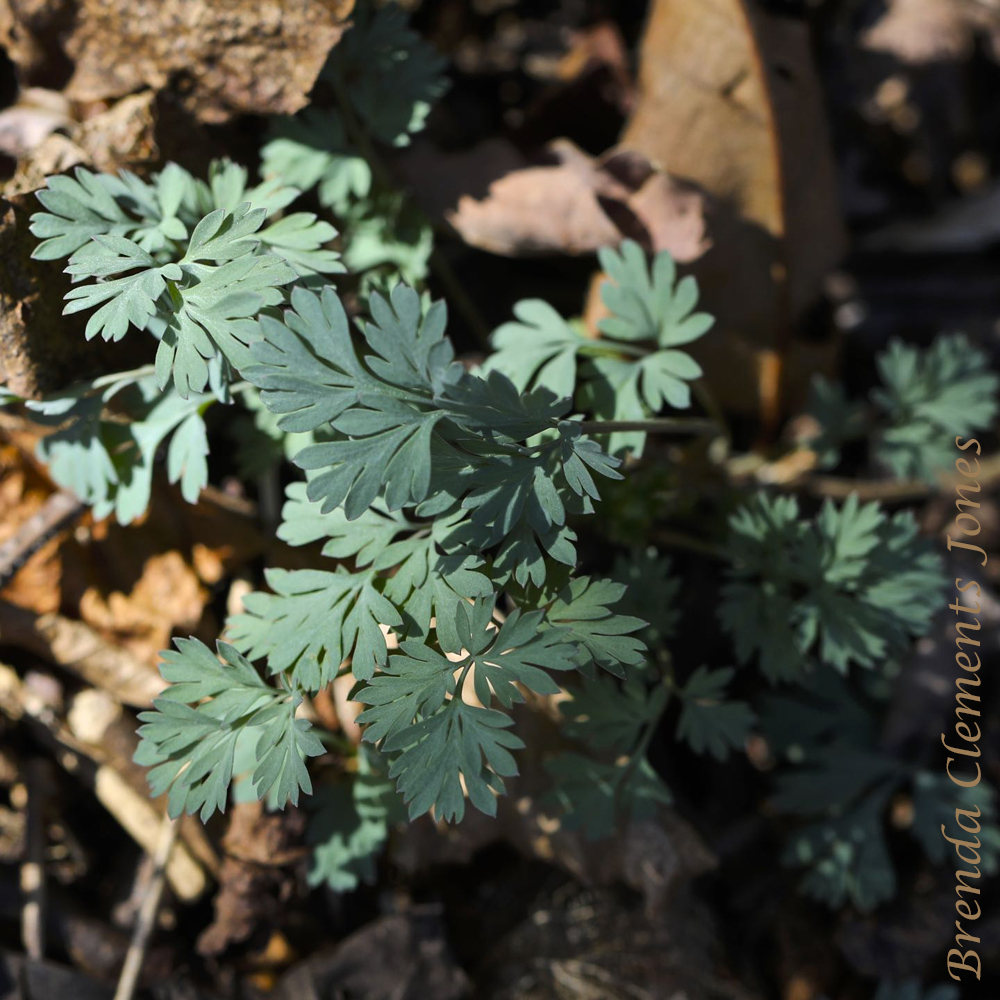
If you’ll bear with me, I’m going to start calling this plant by its scientific name largely because I had misidentified it and want to make it clear to me what it is. That’s why I’m reposting about this precious little plant. Getting things straight in my mind.
A couple weeks ago as the earliest of the early spring plants were just peeking their noses up out of the earth I noticed one in particular. It had the look of what, maybe Fringed Bleeding Heart (Dicentra eximia)? Something at the back of my head said “yellow flowers” though. Sure enough it is Corydalis flavula.

Today I checked on these guys coming up in the woods. I’m seeing more of the leaves reaching to the sky. They remind me of an intricate Pennsylvania Dutch scherenschnitte. Though they seem to be reaching to the sky, they’re not going to grow much taller. They’ll top out at around ten inches high.

Corydalis flavula is an herbaceous perennial ephemeral native to the eastern United States. It contains many alkaloids that make plants distasteful and can be toxic to livestock and pets. I am truly astounded at how many plants fit into this toxic category.

The lemon yellow flowers have quite an unusual shape and the name, Corydalis, comes from a Greek word that means “crested lark.” I’ve put these flowers on my list of photos to get. I want more close-ups!

The seeds that form in Corydalis flavula’s mini seed pods have that appendage, that some seeds have, called an elaisome. Another one of those plants that get ants to bring the seeds to their larvae. The larvae are fed the elaisomes and the seeds are thrown into the ant’s “trashroom” which is the perfect place for those seeds to grow. Wait for it again in the next growing season and thank those ant farmer’s.
